Across North America, 3D printing is reshaping how homes and buildings are constructed, offering a faster, more cost-effective solution to meet growing demands. From entire communities of printed homes in Austin, Texas, to the unique Fibonacci House in British Columbia, these projects are pushing the boundaries of traditional building methods, offering a glimpse into the future of sustainable construction.
1. Community First! Village
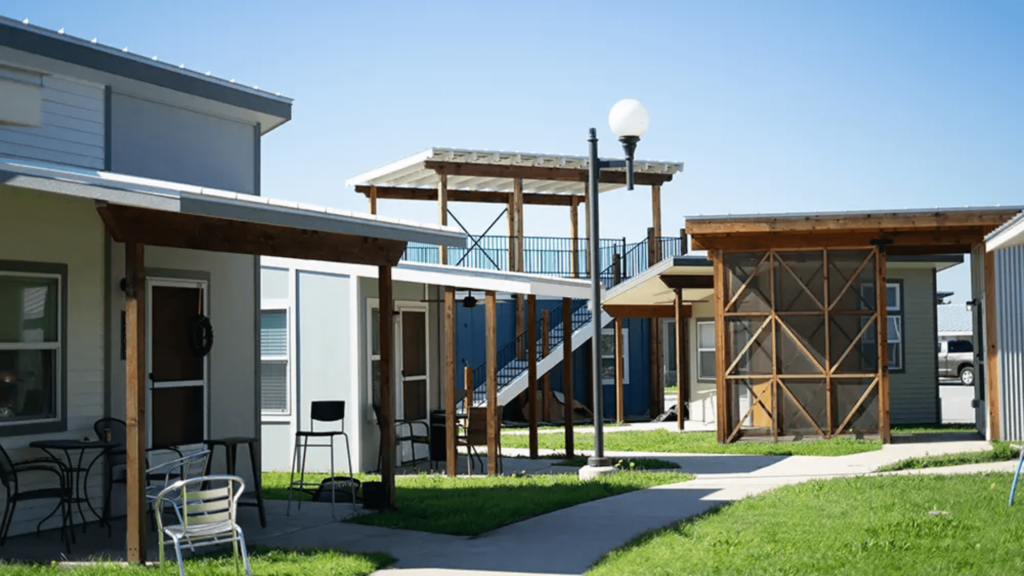
- Location: Austin, Texas
- Year Built: Ongoing (initial phase completed in 2019)
- Type: Affordable housing for the homeless
The Community First! Village in Austin is a unique initiative aimed at providing permanent housing for Austin’s homeless population. ICON partnered with the organization to use 3D printing technology to construct durable, low-cost homes as part of the village. The houses are built using ICON’s Vulcan construction system, which prints resilient, sustainable, and cost-effective structures.
While not all homes in the village are 3D-printed, it remains one of several innovative construction techniques used to provide housing for people experiencing homelessness. This project is a remarkable example of how 3D printing can significantly impact society by providing dignified, permanent housing.
2. Wolf Ranch 3D-printed homes
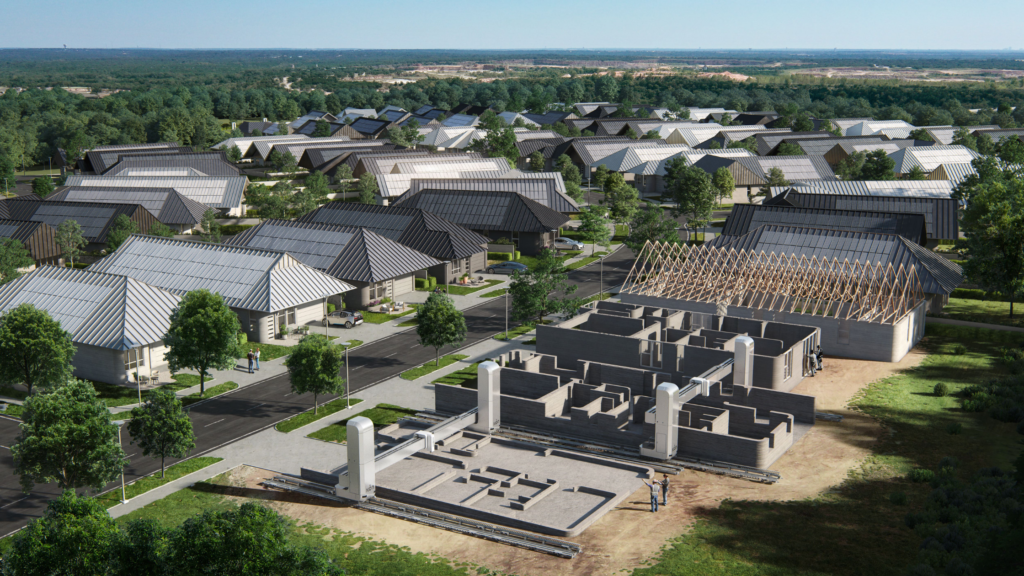
- Location: Georgetown, Texas
- Year Built: 2023
- Type: Residential development
Wolf Ranch, in Georgetown, Texas, is one of the largest 3D-printed home developments in the world. This development is a collaborative project between ICON and Lennar, showcasing the future of residential construction. This master-planned community features homes printed using ICON’s advanced 3D printing technology, offering modern designs with enhanced sustainability and energy efficiency. The project aims to revolutionize how we build homes by reducing construction time and labor costs while maintaining high standards for quality and durability.
Each home in the Wolf Ranch community is designed with innovation and livability in mind. It features open floor plans, energy-efficient systems, and resilient concrete walls that are stronger and longer-lasting than traditional wood or brick construction. These homes are also designed to blend into the natural landscape of Texas Hill Country, providing a seamless integration of modern technology with timeless architectural appeal.
The project demonstrates how 3D printing can be scaled up to create entire neighborhoods, potentially transforming the housing industry on a larger scale. Wolf Ranch is a prime example of how cutting-edge building techniques can address housing shortages and sustainability challenges.
3. New Story’s 3D-printed community
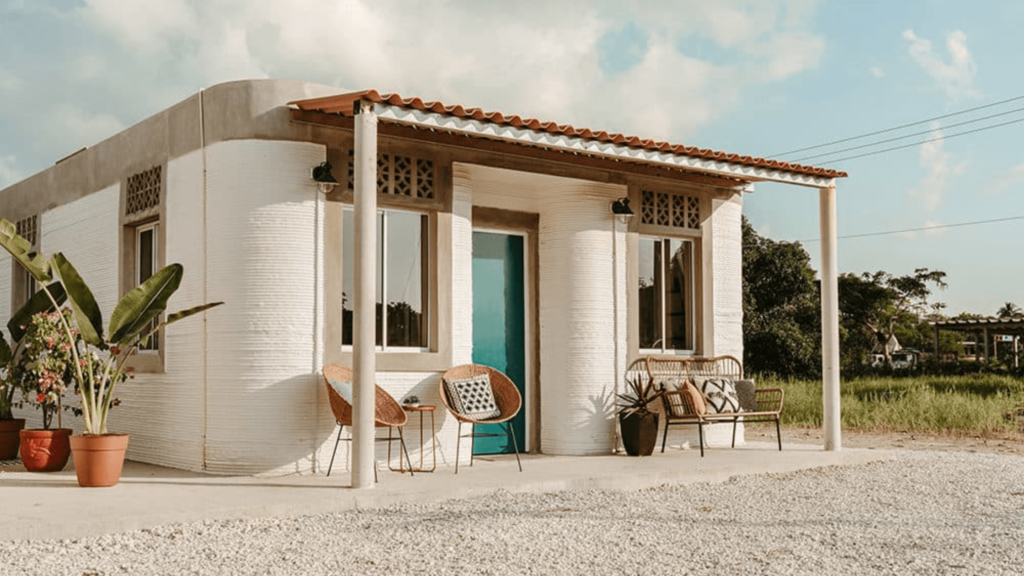
- Location: Tabasco, Mexico
- Year Built: 2019
- Type: Residential community
In 2019, New Story, a nonprofit dedicated to housing those in need, teamed up with tech powerhouse ICON to build the world’s first 3D-printed community in Tabasco, Mexico. This project features 50 homes printed using ICON’s Vulcan II printer, explicitly designed to meet the needs of low-income families in the region. Each house was printed in just 24 hours and was built to withstand local environmental challenges like seismic activity.
The homes, each around 500 square feet, have two bedrooms, a living room, a kitchen, and a bathroom. This project demonstrates how 3D printing can provide affordable, safe, and resilient housing for vulnerable communities, offering a sustainable solution to global housing shortages.
4. Habitat for Humanity’s 3D-printed home
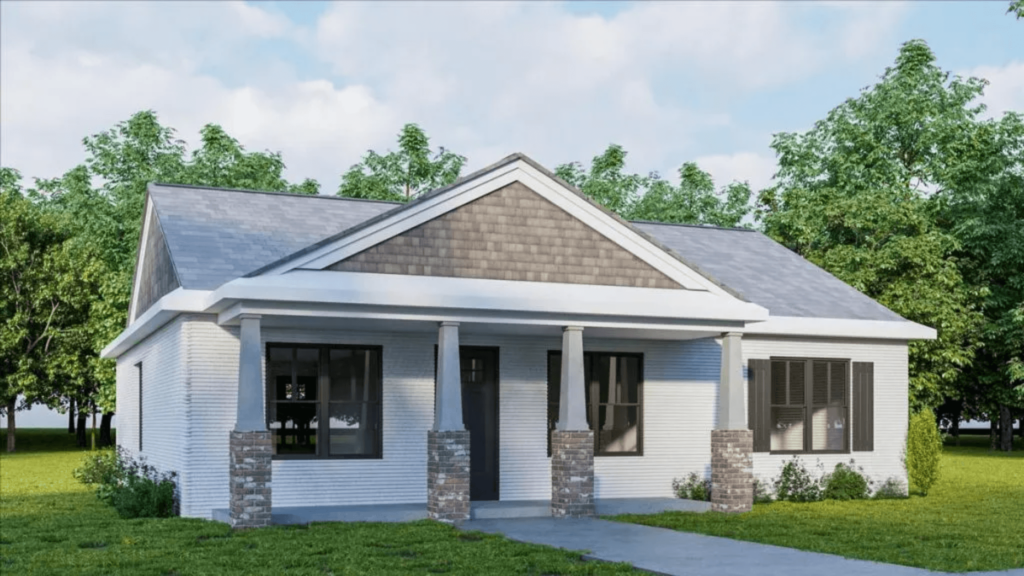
- Location: Williamsburg, Virginia
- Year Built: 2021
- Type: Residential
In 2021, Habitat for Humanity made history by building its first 3D-printed home in Williamsburg, Virginia. This project was a breakthrough for affordable housing, demonstrating how 3D printing can reduce construction time and costs. The house was built in partnership with Alquist, a 3D-printing construction company, and combines traditional construction methods with cutting-edge 3D printing technology.
The 1,200-square-foot home has concrete walls, which offer greater durability and energy efficiency than typical wood-framed homes. The exterior structure was printed in just 12 hours, significantly faster than conventional building timelines. The house was then completed with a traditional roof, plumbing, and electrical systems, perfectly balancing innovative and established construction practices.
Designed for a single family, this 3D-printed home is a testament to how technology can be leveraged to create affordable, sustainable housing solutions accessible to more people. It also marked a significant step forward in Habitat for Humanity’s mission to eliminate substandard housing worldwide.
5. The Fibonacci House

- Location: Procter, British Columbia
- Year Built: 2020
- Type: Vacation rental/residential
The Fibonacci House in Procter, British Columbia, is Canada’s first 3D-printed home, inspired by the natural beauty of the Fibonacci sequence. Built in 2020 by the Netherlands-based construction company Twente Additive Manufacturing, this unique project stands out for its innovative construction method and design. It features a curved, spiraling layout that mirrors the mathematical proportions found in nature. The home was printed in layers using concrete, making it sustainable and energy-efficient.
The Fibonacci House is a small, cozy structure designed for short-term rentals, offering guests a unique opportunity to stay in a 3D-printed home. The house has modern amenities, while the concrete construction provides excellent insulation and durability. It was completed in just a few days, showcasing how 3D printing can be used for quick, efficient construction without sacrificing quality or design.
This project highlights the potential of 3D printing in residential construction, particularly for creating sustainable, affordable, and aesthetically striking homes. It’s a perfect example of how new technologies can be used to push the boundaries of architecture and design.
6. El Cosmico 3D-printed campground hotel
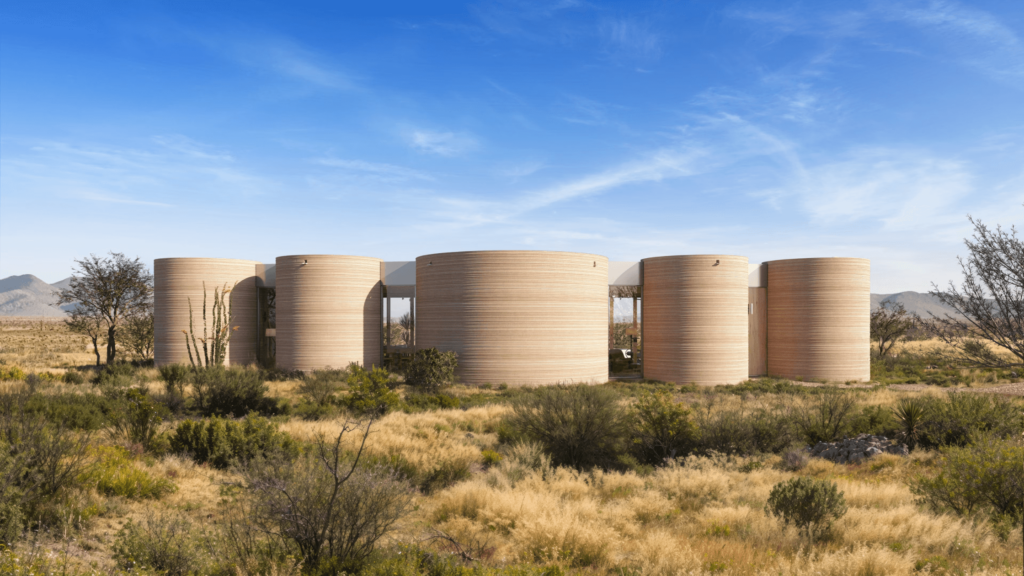
- Location: Marfa, Texas
- Year Built: Under development (2023 onwards)
- Type: Hospitality/campground hotel
El Cosmico, a one-of-a-kind 3D-printed campground hotel in Marfa, Texas, is a collaboration between ICON and the world-renowned architecture firm BIG (Bjarke Ingels Group). The project reimagines an existing campground and hotel into a futuristic, desert-inspired oasis. Once completed, it will feature 3D-printed domes, vaults, and other organic shapes that blend seamlessly with the desert landscape. This project takes full advantage of 3D printing’s ability to create complex, freeform structures that traditional construction techniques can’t easily replicate.
El Cosmico is not just a hospitality project but also an artistic and architectural exploration. It offers unique accommodations that reflect Marfa’s natural beauty and cultural significance. With its sustainable building practices and innovative design, El Cosmico sets a new standard for eco-friendly and visually stunning 3D-printed architecture.
7. Azure Printed Homes
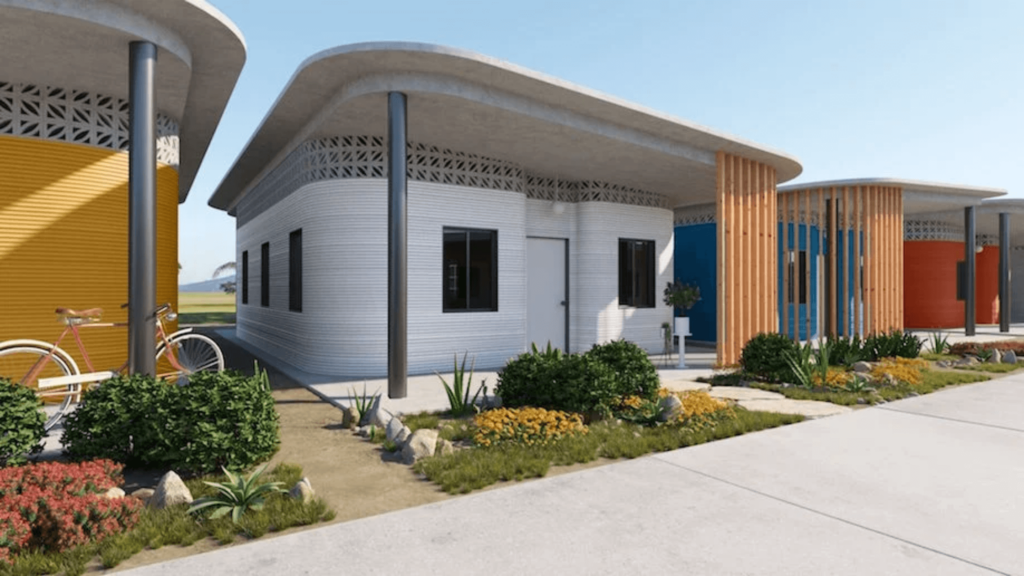
- Location: Culver City, California
- Year Built: Ongoing (initial homes completed in 2022)
- Type: Residential (single-family homes and accessory dwelling units – ADUs)
Azure Printed Homes, based in Culver City, California, is revolutionizing the housing industry with its innovative approach to 3D printing. Specializing in sustainable, prefabricated houses, Azure uses recycled plastic to 3D-print its structures, reducing material waste and environmental impact. The homes are printed in just a few days, offering a fast and affordable alternative to traditional construction.
Azure’s homes are designed to be eco-friendly, affordable, and customizable, making them a perfect solution for those looking for sustainable housing or backyard accessory dwelling units (ADUs). The company’s focus on using recycled materials sets it apart, offering a glimpse into the future of green construction. Azure is one of the first companies in North America to combine 3D printing with sustainability at this scale, demonstrating how modern technology can create affordable and environmentally responsible homes.
The bottom line
The future of 3D-printed construction in North America holds immense potential for transforming how we build homes, offices, and even large-scale infrastructure. As the technology advances, it offers clear benefits such as significant cost reductions, faster construction times, and improved sustainability. Using materials like concrete and recycled products, 3D-printed buildings are more energy-efficient and create less waste than traditional construction methods.
What began as a promising solution for affordable housing is now expanding into larger commercial and industrial projects. 3D printing is gradually moving from small-scale residential builds to bigger endeavors, including offices, schools, and community centers. As the technology evolves, it has the potential to address housing shortages, reduce environmental impact, and revolutionize how we approach construction at every level. The combination of innovation, sustainability, and efficiency makes 3D printing one of the most exciting developments in the building industry to date.
Want more like this? Subscribe to our weekly newsletter for the details on the latest projects delivered straight to your inbox.
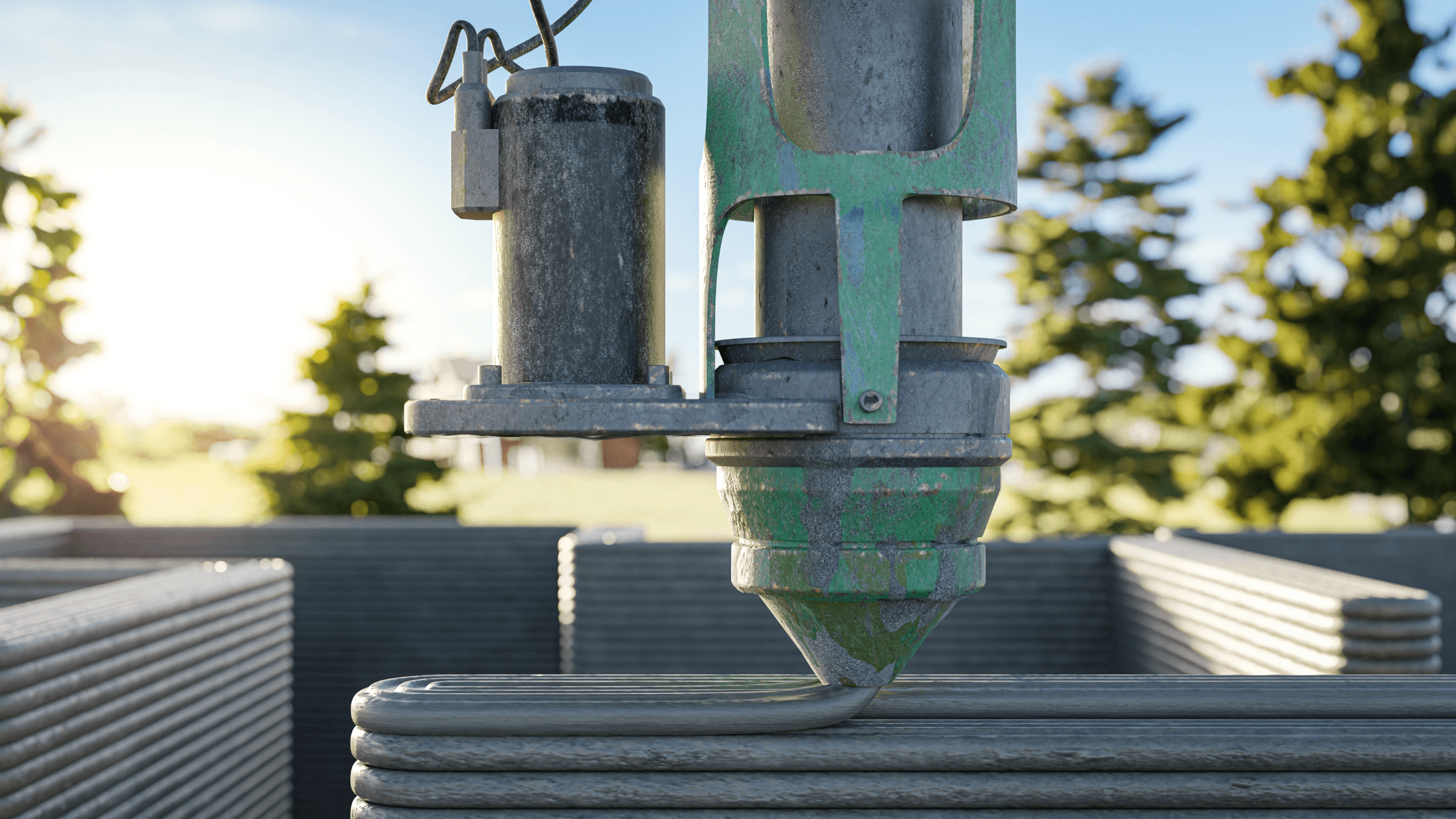


3 comments